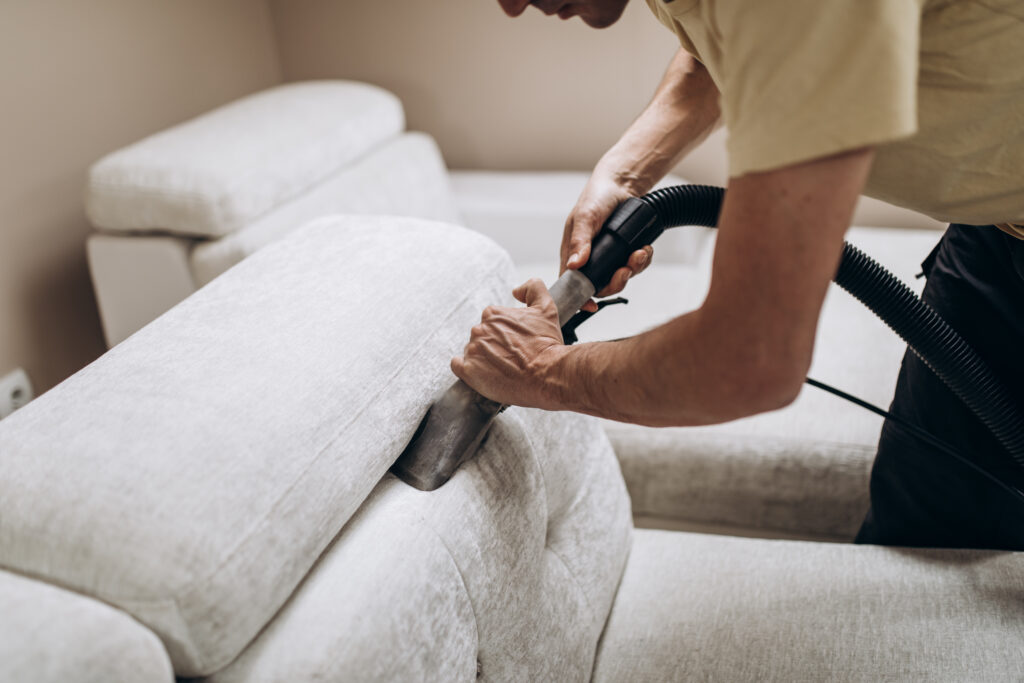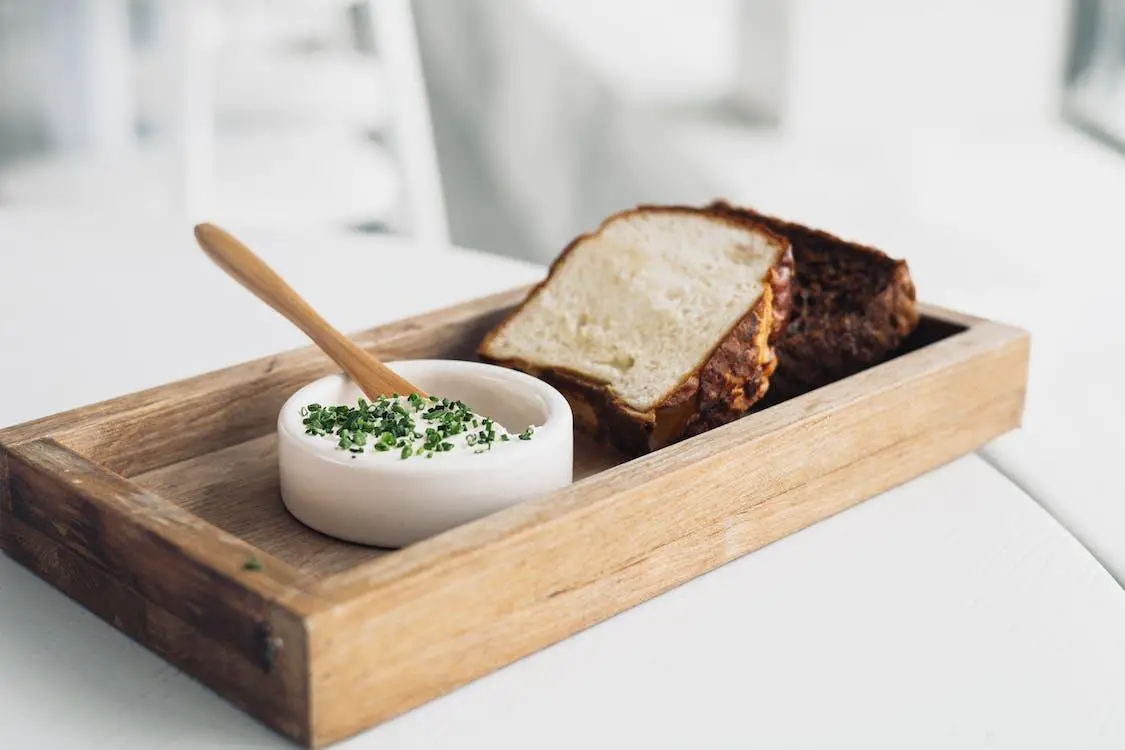How to Clean Your Sofa Upholstery: A Guide to Removing Tough Stains
Does your once-luxuriously upholstered sofa now resemble a faded canvas of dust, crumbs, and unidentified stains? This is a common experience for many furniture owners. But before you resign yourself to a life of sunken cushions and questionable upholstery aesthetics, this comprehensive guide is here to empower you.
It will equip you with the knowledge to decipher care labels, choose gentle yet effective cleaning solutions, and even provide tips for keeping your sofa looking fresh and inviting after a deep clean. However, if you need extra help, you can always consider professional upholstery cleaning to ensure your sofa receives the best care possible.

Materials You’ll Need:
- Vacuum cleaner with an upholstery attachment
- Soft-bristled brush
- White cloths or paper towels
- Mild dish soap
- Baking soda
- Distilled White vinegar
- Hydrogen peroxide (optional for very tough stains)
- Commercial upholstery cleaner (optional)
- Spray bottle
- Cold water
Guide To Clean Your Sofa Upholstery With Tough Stains
Cleaning your sofa upholstery, especially when dealing with tough stains, can seem like a daunting task. However, with the right approach and materials, you can make your sofa look fresh and clean again. Here’s a step-by-step guide to help you tackle those stubborn stains.
Vacuum the Sofa
Start by thoroughly vacuuming your sofa using the upholstery attachment on your vacuum cleaner. This step is crucial as it removes loose dirt, dust, and debris from the surface and crevices of the sofa. By doing this, you prevent these particles from getting embedded deeper into the fabric during the cleaning process. Make sure to reach into all the nooks and crannies, including under the couch cushions and along the seams.
Identify the Stain
Understanding the type of stain, you’re dealing with will help you choose the most effective cleaning method. Common tough stains include food and drink spills, pet stains, ink, and grease. Each type of stain may respond differently to cleaning solutions, so identifying it correctly is essential. For example, grease stains often require different treatment than ink or wine stains.
Blot the Stain
When spills happen, act fast! Grab a clean, damp cloth or paper towel and gently blot that fresh stain to soak up as much liquid as you can. Blotting is key to lift it off the fabric without spreading it further. No rubbing or scrubbing yet, as that could grind the stain deeper into the upholstery fibers, making it tougher to banish.
Prepare a Cleaning Solution
Next, prepare a cleaning solution based on the type of stain. For general stains, mix a few drops of mild dish soap with cold water in a spray bottle. For tougher stains, create a mixture of equal parts white vinegar and cold water. Additionally, for particularly stubborn stains, you can make a paste using baking soda and clean water. These solutions are gentle yet effective in breaking down stains without damaging the fabric.
Test the Solution
Before going full throttle with the cleaning solution, do a spot test first on a hidden area of your sofa. This crucial step ensures you don’t accidentally discolor or damage that precious upholstery while battling the stain. Wait a few minutes to see if there is any adverse reaction before proceeding with the full application.
Apply the Cleaning Solution
Lightly spray the cleaning solution onto the stained area of the sofa. Grab a soft brush or clean cloth and gently work that cleaning solution into the stain with circular motions. This elbow grease helps loosen those pesky stain particles from the fabric’s grip. For baking soda paste, apply it directly to the stain and let it sit for a few minutes to allow it to break down before scrubbing.
Rinse and Blot
After treating the stain, it’s important to remove any residual cleaning solution. Dampen a clean cloth with cold water and blot the area to rinse out the soap or vinegar mixture. Repeat this process until you’re sure that all the cleaning solution has been removed. Proper rinsing prevents any residue from attracting more dirt in the future.
Dry the Area
Once the stain is treated and rinsed, use a dry cloth or paper towel to blot the area and remove as much moisture as possible. Allow the upholstery to air dry completely before using the sofa again. Avoid using heat sources like hair dryers, as high temperatures can damage the fabric and set any remaining stain.
For Very Tough Stains
If the stain is particularly stubborn and refuses to budge, consider using hydrogen peroxide. Apply it sparingly with a cloth and gently blot the stain. Be cautious with hydrogen peroxide, as it can bleach certain fabrics. Always perform a spot test in an inconspicuous area first to ensure it’s safe for your sofa.
Use a Commercial Upholstery Cleaner
When home remedies aren’t effective, a commercial upholstery cleaner designed for your sofa’s fabric type can be a viable option. Follow the manufacturer’s cleaning instructions carefully to avoid any potential damage. Commercial cleaners are formulated to tackle specific types of stains and fabrics, providing a quick clean.
Preventative Tips
To maintain your sofa’s cleanliness and prevent future stains, regularly vacuum it to remove dirt and dust. Address spills immediately to prevent them from setting into the fabric. Consider using slipcovers or throws to protect the upholstery from everyday wear and tear, making it easier to keep your sofa looking its best.
By following these detailed steps, you can effectively clean your fabric sofa and tackle tough stains, ensuring your furniture remains a beautiful and comfortable part of your home.
Conclusion
By following the steps outlined in this guide, you’ll be well on your way to reviving your favorite sofa. Remember, consistent cleaning and stain removal not only enhance the look and feel of your furniture but also extend its lifespan. With a little effort and the knowledge you’ve gained here, you can transform your sofa back into a comfortable and inviting haven for years to come.







